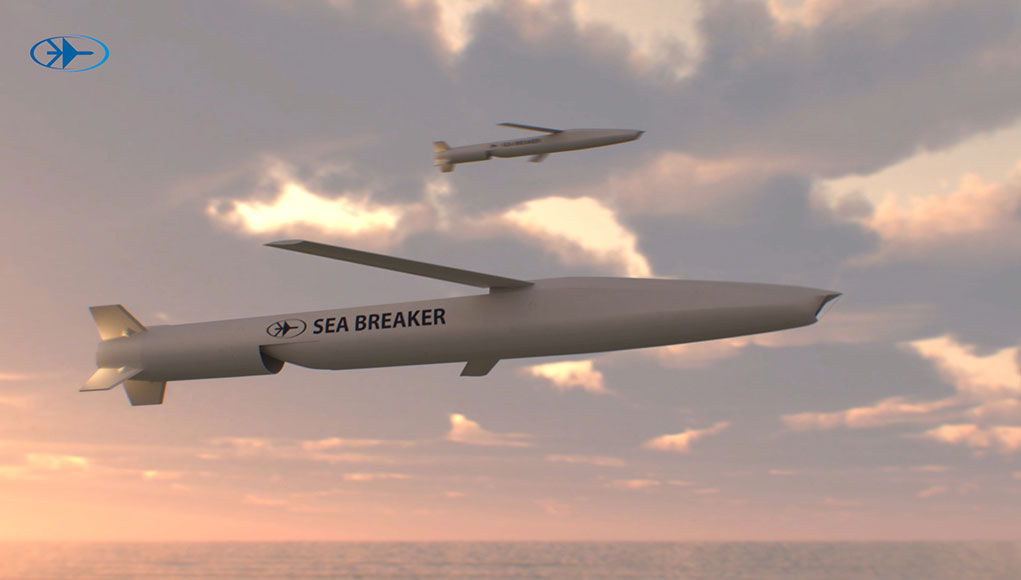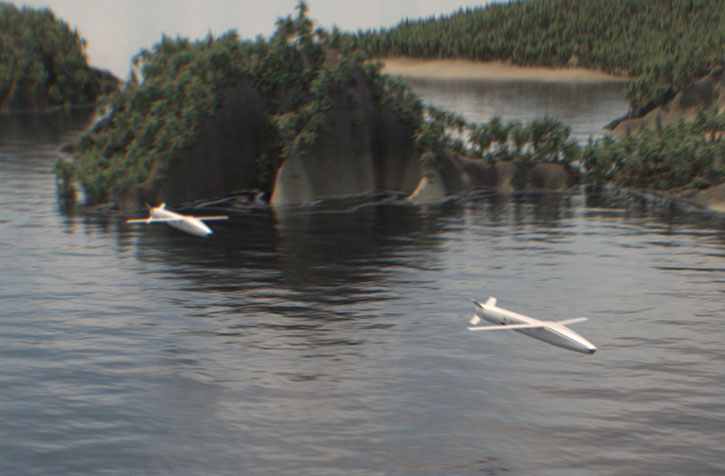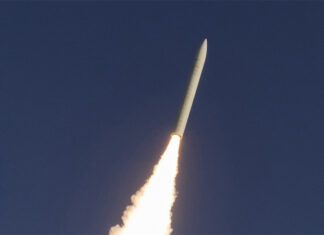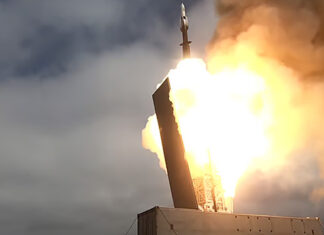Israel’s Rafael Advanced Defense Systems Ltd. unveiled today the Sea Breaker, a 5th generation long-range, autonomous, precision-guided missile system, enabling significant attack performance against a variety of high-value maritime and land targets. Rafael foresees Sea Breaker as a multi-domain weapon system capable of delivering lethal effects as an anti-ship, land-attack, coastal defense, and surface-to-surface cruise missile.
The need for versatile and advanced naval missiles has emerged since most countries have access to weapons and capabilities previously reserved for superpowers. Today platforms and weapons face advanced threats manifested in large missile-protected airspaces known as A2AD deployed by enemy naval task forces on hips, along the coastlines and inland. Those arrays defend strategic targets in-depth, with air defense and surface attack missiles maintaining effective barriers over hundreds of kilometers, forcing an attacker to launch attacks from hundreds of miles away, using heavy, sophisticated, and expensive weapon systems. Using conventional means, such attacks are often detected and defeated effectively from long range, leading to devastating retaliatory attacks against the naval force that launched the attack.
Other challenges are warfare in the grey zone, where an irregular adversary may threaten the freedom of navigation and movement with weapons emplaced in a crowded urban environment, where attacks against those assets risk unacceptable collateral damage.
With Sea Breaker, Rafael enables modern navies to address the challenges posed by enemy A2AD and grey zone warfare. To avoid such consequences, navies seek advanced, unorthodox capabilities to surprise and overmatch an adversary from a distance, with a high probability of success. According to Rafael, Sea Breaker enables such an edge by employing a smart, agile and lethal naval weapon system that can deliver coordinated and scalable attacks on highly defended naval and land targets with a high probability of success. The missiles can successfully operate in littoral or brown water, including archipelago and engagements in which previous generation RF-seeker-based missiles were ineffective.

Unlike in the past, when sea/sea missiles were based on the radar for target seekers, today, many new anti-ship missiles use EO/IIR seekers. While earlier generation EO/IR has suffered from limited visibility in harsh weather conditions, Sea Breaker fuses different sensing modes, combining inertial navigation, Imaging Infra-Red (IIR), terrain profile matching (TERPROM), and scene matching to provide a reliable and accurate navigation solution in all weather conditions.
Subscribe to get the full content including this comparison table

The powerful processing unit also supports automatic acquisition (ATA) and recognition (ATR) of stationary and moving targets, using Artificial Intelligence (AI) and Machine Learning (ML) trained to process Big Data resources obtained by the seeker to separate the targets from the noise collected by the missile’s sensors. This process allows Sea Breaker to overcome the challenges of weather and countermeasures. According to Rafael, their technology is two generations ahead of the competition, as it has evolved for five generations on various missiles the company has developed. Moreover, the Sea Breaker’s efficient targeting system can perform in complex environments is unmatched by most radars, which are challenged in crowded and littoral environments.

The Sea Breaker is a compact missile less than four meters long that weighs less than 400 Kg and packs a 113 kg (250 lbs.) warhead. The missile uses a booster rocket and turbojet sustainer to fly up to 300 km (nm) following a preplanned attack trajectory. It has cruciform tail rudders for steering at loads up to five Gs and wings that fold out after launch to generate the lif that supports the cruising phase. A small jet turbine sustains the flight at a high subsonic speed throughout the missile’s preplanned trajectory. According to Rafael, the warhead is designed to deliver enhanced effects, penetration, blast, and fragmentation effects equivalent to a 500 lb (226 kg) Mk-82 bomb, making a single hit effective enough to neutralize a frigate-sized ship.
The missile will be launched from naval platforms, varying in size, from fast attack missile boats to corvettes and frigates. The land version employs Rafael’s highly mobile SPYDER air defense missile units mounting six Sea Breaker launcher canisters. The land-based variant is identical to the naval missile and is poised to become a central part of a shore defense. According to the customer requirements, the coastal missile system in a battery architecture supports standalone launchers, or operation as an integrated solution, with a Command and Control Unit (CCU), various sensors, technical section, and reloading units.
For the launch of its marketing campaign Rafael focuses on small and medium ships and land vehicles as the platforms for Sea Breaker. In the future, more options will likely be considered to support evolving naval warfare concepts of unmanned ships and submarines. Sea Breaker is currently at an advanced development phase and has raised interest with several potential customers, likely nations located at the South China Sea. Some of those nations would be potential candidates for this versatile weapon and already operate Rafael’s Spyder air defense systems.




















